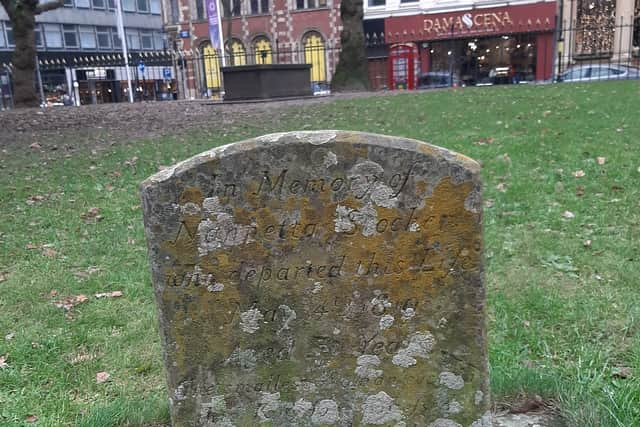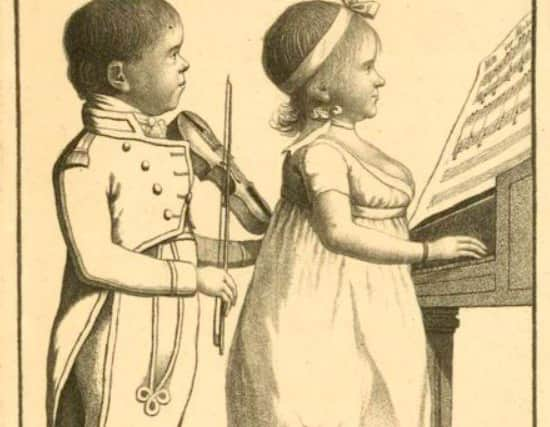The amazing story behind a Birmingham memorial that thousands walk past every day in Pigeon Park
and live on Freeview channel 276
It is the strange, lost memorial that thousands trudge past every day, oblivious to its importance.
It is Birmingham’s unknown landmark – a secret to visitors and residents alike. The stone, only inches from the footpath that threads through St Philip’s Cathedral ground, is small and weathered, the words etched on it erases or hidden by litchen. Yet it is the burial site of a true showbiz star.
Advertisement
Hide AdAdvertisement
Hide AdVery close inspection of the gravestone reveals the name Nanette Stocker and her death date - May 4, 1810. Underneath, the epitaph can only just be made out: “The smallest woman ever in the kingdom.” Her height was included on the headstone and is still visible: “33 inches high”. That’s 2ft 9ins.
Nanette, born in Austria, has her last resting place in the city because she died here, aged 39. It is not known if she was performing in Birmingham or moved here. At a time when the public had a morbid fascination for physical extremes, Nanette gained celebrity status.
Despite her stature, she was a showbiz giant, a much sought after act across Europe. She was, for many years, headliner at Birmingham’s Onion Fair, staged in Aston.


Nanette was one half of a double act. She played the pianoforte alongside John Hauptmann, who was 3ft 6ins, on the violin. The couple would then dance together while audiences cheered.
Advertisement
Hide AdAdvertisement
Hide AdNanette and Hauptmann engaged in an exhausting tour schedule and, at their peak, a 16 page pamphlet was published about their theatre exploits, "The History and Travels of the Little Nanette Stocker and of John Hauptmann".
In a blog about the Regency period, historian Anne McLeod says: “Conventional employment was difficult before our current era for people with differences and challenges in stature or physiology to obtain. In many cases they had to turn to 'exhibiting' themselves to make a living wage.
“While they were often treated with respect and admiration, the advertisements and articles make it clear that they were not regarded as people in any ordinary sense, but 'wonders and marvels'. Stocker and Hauptman were Austrians, both 'encouraged' into public performance as young people by their guardians. They were talented musicians, and one can only hope that they found satisfaction in impressing audiences with their musical performances.”


Today, it’s hard not to see both Stocker and Hauptmann as cruelly exploited. It’s doubtful crowds were attracted by their music. The stonemason misidentified her first name and inscribed ‘Nanetta’.
Advertisement
Hide AdAdvertisement
Hide AdNanette’s gravestone reads: “In memory of Nanetta Stocker, who departed this life, May 4th, 1819, aged 39 years. The smallest woman ever in this kingdom. Possessed with every accomplishment, only 33 inches high. A native of Austria.”
Those walking through St Philip’s should take a moment to study Nanette Stocker’s grave – a legend whose story has been lost in time.
Comment Guidelines
National World encourages reader discussion on our stories. User feedback, insights and back-and-forth exchanges add a rich layer of context to reporting. Please review our Community Guidelines before commenting.
